
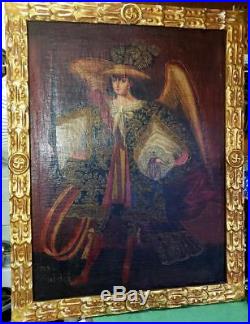
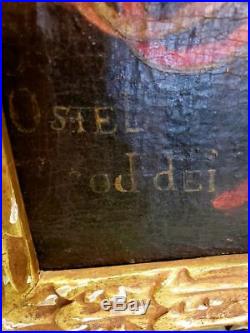
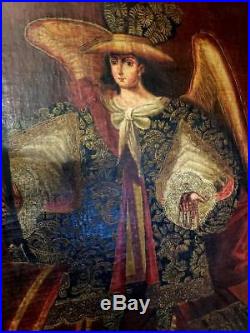
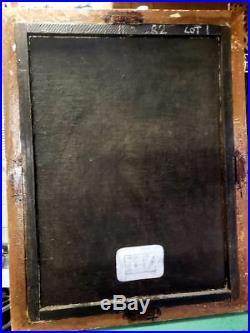
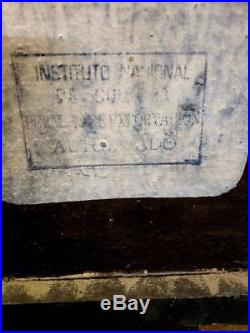

An ángel arcabucero arquebusier. Angel is an angel. Depicted with an arquebus. (an early muzzle-loaded firearm) instead of the sword traditional for martial angels, dressed in clothing inspired by that of the Andean nobles and aristocrats. The style arose in the Viceroyalty of Peru. In the second half of 17th century. And was especially prevalent in the Cuzco School. In his work Ángeles apócrifos de la América Virreinal (1992), Ramón Mujica Pinilla noted the link between ángeles arcabuceros and certain winged warriors from the pre-Hispanic pantheon. The good reception that these works found among indigenous people of the era may be due in part to the ease with which they could identify these winged warriors with their ancient gods and heroes. According to Kelly Donahue-Wallace, the genre probably originated in the Collao region, near Lake Titicaca. And were actually based on Spanish and Dutch engravings. Some of these European prints depicted apocryphal. Condemned by the Church, but apocryphal motifs. Survived in the Andes. Another probable source for the angels’ poses, corresponding to the military exercises of the period, were the engravings from the 1607 Exercise in Arms by Jacob de Gheyn II. Calamarca church, about 60 km from La Paz. Bolivia, contains one of the most complete existing series of ángeles arcabuceros , including the Asiel Timor Dei by Master of Calamarca. That are considered definitive examples of the type. At the beginning of the 18th century, the demand for paintings from all corners of the Viceroyalty grew rapidly. To satisfy this demand, large artistic workshops, mostly indigenous, were established. Today, paintings of ángeles arcabuceros are found in Peru, Bolivia. Northern Argentina, and in various museums in Spain. There is also a collection of ten ángeles arcabuceros in the San Francisco de Padua Church in Uquía. Located in Argentina’s Quebrada de Humahuaca. The item “ANGEL ARCABUCERO-Painting-Oil on Canvas-18th Century-School of Cuzco-Peru” is in sale since Thursday, August 9, 2018. This item is in the category “Art\Paintings”. The seller is “dominoochstamps” and is located in Clifton, New Jersey. This item can be shipped worldwide.
- Size: Medium (up to 36in.)
- Region of Origin: Latin America
- Artist: Ostel Dei- School of Cuzco
- Style: Peru
- Listed By: Dealer or Reseller
- Quantity Type: Single-Piece Work
- Painting Surface: Canvas
- Medium: Oil
- Date of Creation: Pre-1800
- Special Attributes: Signed
- Year: 1750-1800
- Features: Framed
- Width (Inches): 23
- Color: Multi-Color
- Subject: Angels
- Originality: Original
- Height (Inches): 31
